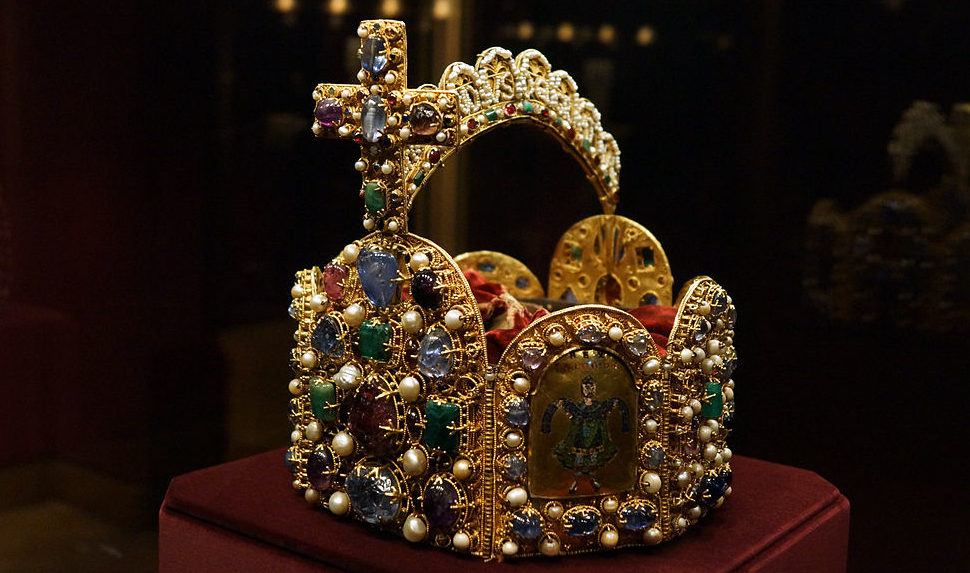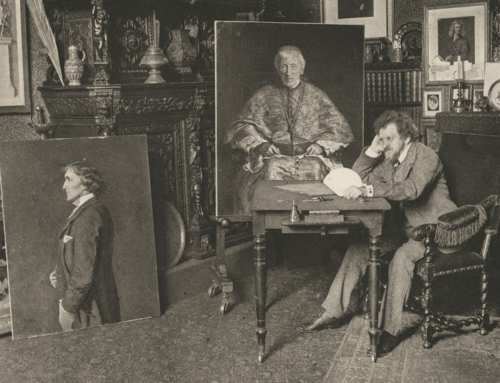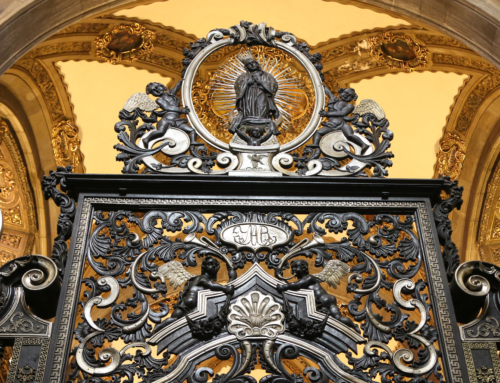Bedazzling! That’s the word that comes to mind while looking at the crown of Charlemagne. But if you focus your attention on just one of the jewels—beautiful as they are—the splendor of the whole fades. It takes what seems to be an absurd amount of gems to produce such a powerful effect. In a similar way, the lives of the saints, while individually brilliant, dazzle by their union under one Holy Catholic Church.
There are many examples of this in the Dominican Order. All we need to do is consider a few of the dozens of saints and hundreds of blesseds. (Check out this litany!). Each of these saints and blesseds are like a beautiful gem, shining radiantly for the glory of God. Splendid on their own, they are brought together in a marvelous harmony by their unity in this Order founded by St. Dominic.
For example, St. Thomas Aquinas is perhaps the most famous of Dominicans as the greatest systematic theologian and the Common Doctor of the Church. Following close behind him in fame is St. Catherine of Siena, a fiery preacher eager to turn sinners back to God. Yet unlike St. Thomas, the erudite scholar, she had no formal education and was unable to learn to read without divine intervention. Marvellously, in the Dominican Order these two saints are set side-by-side in a crown to adorn Holy Mother Church and glorify her spouse, the Lord Jesus Christ.
Yet, most of us are not spiritual giants like St. Thomas or St. Catherine. Still, there is the example of Bl. Anthony Neyrot and St. Antoninus as well. St. Antoninus was the prior of San Marco in Florence during the mid-15th century (that is to say, at the same time that Bl. Fra Angelico was painting frescoes on all of the walls) and would certainly rank with St. Catherine and St. Thomas as a spiritual giant. On the other hand, Bl. Anthony Neyrot was an apostate. After entering the Dominican Order and being ordained a priest, he lived for a time in San Marco under St. Antoninus. Feeling unsatisfied, he asked for a change of assignment, and while travelling he was kidnapped and imprisoned by Moorish pirates. Eventually he denied his faith, was adopted by the caliph of Tunisia, and married a high-ranking Turkish lady. But on hearing of the death of St. Antoninus, and being visited by the saint in a dream, Bl. Anthony was moved to repentance. He confessed to a Dominican priest, did penance, and was welcomed back into the Order. Wanting his reconversion to be as public as his apostasy, he waited until the caliph was returning from a successful military campaign and then greeted him dressed in the full Dominican habit. In response to this, the caliph had him stoned to death on Holy Thursday, 1460, and so the once-apostate died a martyr for the Church.
We can learn much from the diversity of the saints. The example of Bl. Anthony elucidates how the holiness of a brother can encourage us to be holy as well. Furthermore, the relationship between Bl. Anthony and St. Antoninus highlights how no one becomes a saint on his own. Truly, no matter how skilled or talented we are, there is always some way in which those talents can be amplified by others. The Holy Spirit pours out different gifts on everyone, but does not pour out every gift on anyone. St. Thomas and St. Catherine illustrate this range of gifts as it is found in the Dominicans.
The unity of the saints teaches us that we are meant to support and build one another up and accept similar support from others. For it is not weakness to rely on another; rather, another’s strength serves as a remedy for our weakness. Because of this, we are able to give greater glory to God by working together and sharing with each other the gifts we have received. In this way we follow the Catholic Church’s universal call to holiness, and we too can shine as saints in a majestic crown fit for the bride of a king.
✠
Image by User:Bede735c, The Imperial Crown of the Holy Roman Empire (CC BY-SA 3.0).







